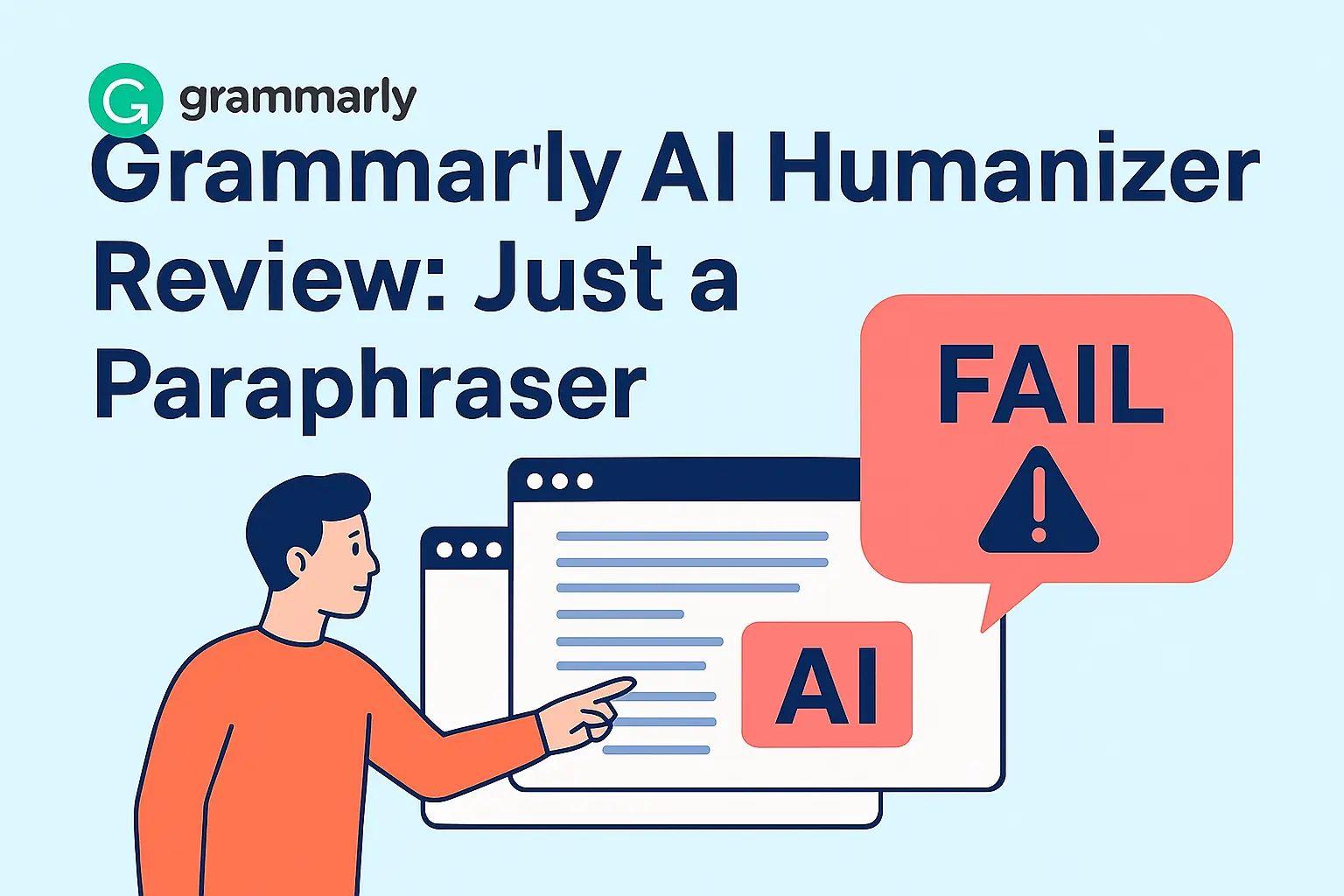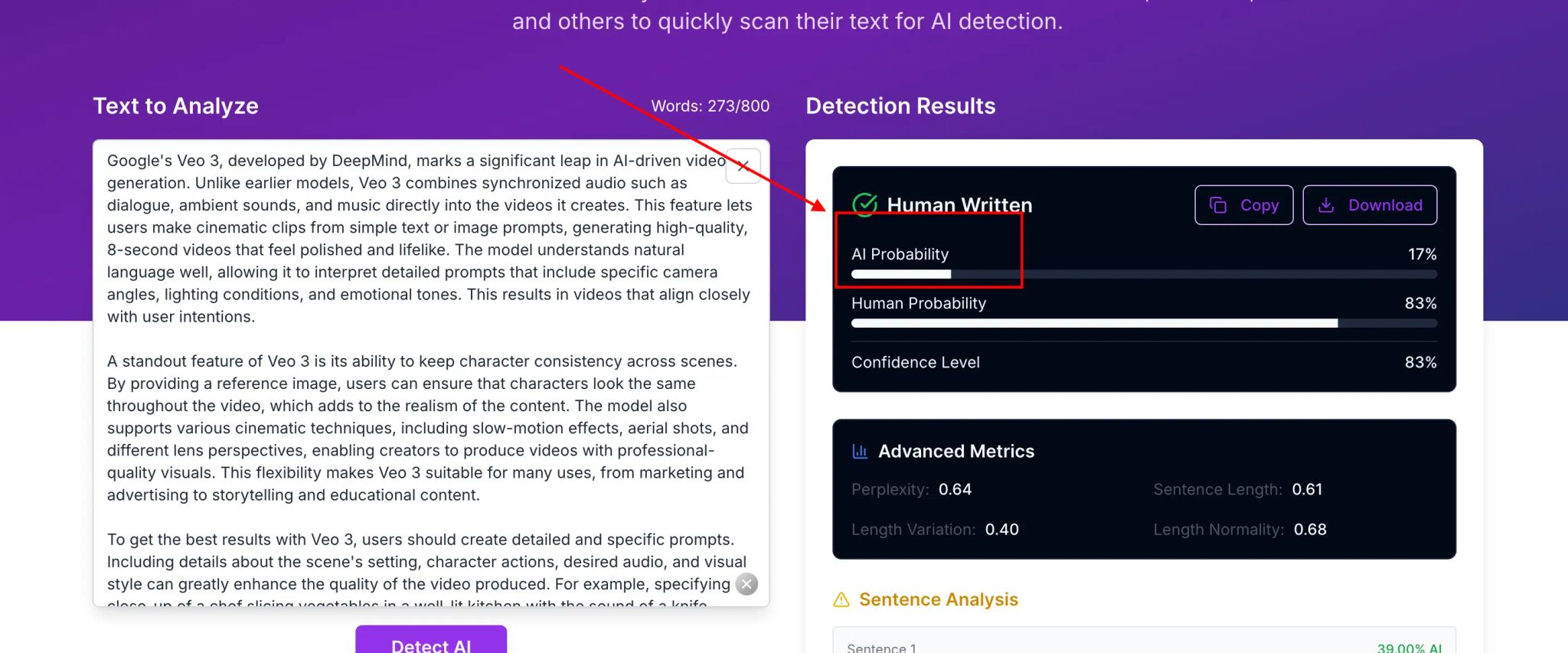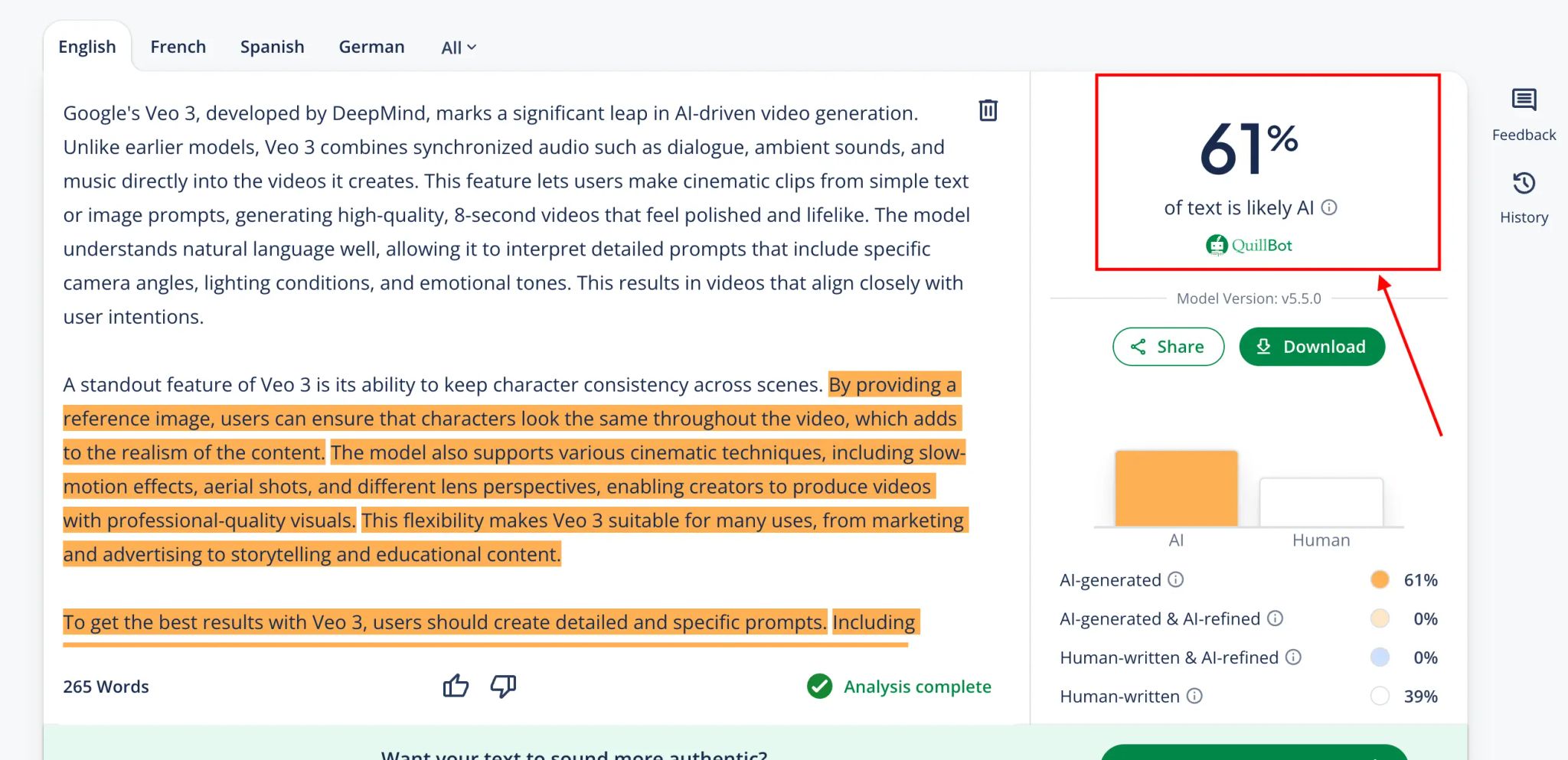Grammarly AI Humanizer Review: Just a Paraphraser
Grammarly’s new AI Humanizer is more of a paraphraser than a true AI humanizer. See why it fails to bypass AI detection and what alternatives actually work in 2025.

Grammarly AI Humanizer Review: Just a Paraphraser
Grammarly is one of the most popular writing tools in the world. Millions of students, professionals, and businesses rely on it for grammar corrections and clarity suggestions. Recently, Grammarly introduced what it calls an AI Humanizer, claiming to make AI-generated text sound more natural.
The problem? When we tested it, Grammarly’s so-called humanizer did not live up to the name. Instead of producing truly human-like writing, it simply paraphrased the text. More importantly, it failed against multiple AI detectors, which shows that it is not a real AI humanizer.
If you are new to the space, we recommend checking out our guide on what AI humanization really means. This will help you understand why Grammarly’s tool falls short.
What is Grammarly AI Humanizer?
Grammarly has always been seen as a grammar and style tool, not an AI rewriter. With the rise of detectors and AI content filters, Grammarly introduced its AI Humanizer to compete with dedicated humanization tools.
On the surface, Grammarly’s humanizer looks like a way to make text sound less robotic. But in practice, it only paraphrases sentences, swapping words or rephrasing sentences without adding the natural flow that comes from human writing.
This is why calling it an “AI humanizer” is misleading. A true AI humanizer is trained to mimic human writing patterns, restructure text, and make it undetectable by AI detection systems. Grammarly’s tool does not do that.
For a deeper dive into this distinction, see our breakdown of AI humanizers vs paraphrasing tools.
Our Testing Method
To properly evaluate Grammarly AI Humanizer, we used a simple testing process:
- We generated sample AI-written text.
- We ran the text through Grammarly AI Humanizer.
- We checked the output against multiple AI detectors.
For fairness, we used HumanizerPro AI Detector and the QuillBot AI Detector, both of which are widely used for spotting machine-written content.
If you’re curious about how other tools perform, you can read our QuillBot Humanizer review, where we tested it in a similar way.
Test Results: Grammarly AI Humanizer Fails Detection
The results were very clear:
-
HumanizerPro AI Detector: Grammarly’s “humanized” text was still flagged as AI-generated.

Grammarly AI Humanizer flagged by HumanizerPro AI Detector
-
QuillBot AI Detector: The same output was again marked as AI-written.

Grammarly AI Humanizer detected 61% AI by QuillBot Detector
This shows that Grammarly AI Humanizer is not effective for bypassing detection. It may make text slightly different from the original, but it does not fool detectors that are trained to recognize patterns in paraphrased text.
This is part of a broader issue in the industry where many so-called humanizers fail. We discussed this trend in detail in our post AI humanizers failing in 2025? Here’s how to fix it.
Why Grammarly AI Humanizer is Just a Paraphraser
The biggest issue with Grammarly’s approach is that it treats humanization as simple rewording. By replacing phrases and shuffling sentence structures slightly, Grammarly produces output that looks a lot like what QuillBot’s paraphraser does.
This is why detectors easily flag it. The tool does not go beyond surface-level changes. A true AI humanizer should:
- Reconstruct text based on real human writing samples.
- Add natural variation and style.
- Avoid predictable AI-like patterns.
Since Grammarly AI Humanizer does none of this, it cannot be considered a real humanizer. It is essentially just a paraphrasing tool with a new label.
Paraphraser vs. Humanizer: The Key Difference
Many people confuse paraphrasing with humanizing. Here’s the difference:
- Paraphraser: Changes words and sentence structures but keeps the same meaning. It is useful for rewording but still retains AI-like patterns.
- Humanizer: Restructures text in a way that matches human style, tone, and unpredictability. It can bypass AI detectors because it mirrors authentic human writing.
Grammarly falls into the first category, while tools like HumanizerPro belong to the second.
For readers interested in practical applications, our recent article on bypassing GPT detectors explains how advanced humanizers succeed where paraphrasers fail.
HumanizerPro: A Real Alternative
If you need a tool that goes beyond paraphrasing, HumanizerPro is a better option. It is built on models trained with thousands of real human-written samples, which means its output is much closer to how people actually write.
When tested, HumanizerPro consistently produced text that passed AI detectors while still being natural and easy to read. Unlike Grammarly’s humanizer, it does not just swap words—it rewrites content in a way that feels original.
Grammarly AI Humanizer vs HumanizerPro
| Feature | Grammarly AI Humanizer | HumanizerPro |
|---|---|---|
| AI Detection | Fails | Passes reliably |
| Type | Paraphraser | True Humanizer |
| Training | General AI + grammar focus | Trained on human writing samples |
| Output Style | Robotic, word-swapped | Natural, fluent, undetectable |
| Best For | Grammar improvements | Bypassing AI detectors, human-like content |
You can explore more comparisons in our roundup of the best AI humanizers in 2025.
Who Should Use Grammarly AI Humanizer?
Grammarly AI Humanizer does have some uses, but not in the way it is marketed.
- Good for: Improving grammar, polishing sentences, and making light edits.
- Not good for: Bypassing AI detectors, academic writing, publishing, or situations where text must sound truly human.
If your goal is to create human-sounding content that avoids AI detection, Grammarly AI Humanizer will not get the job done.
Final Verdict
Grammarly AI Humanizer sounds promising, but in reality, it is nothing more than a paraphrasing tool. Our tests showed that it failed detection with both HumanizerPro and QuillBot’s AI detectors.
While it may help improve readability slightly, it cannot humanize AI content in the way people expect. For true humanization, where content passes detection and reads naturally, HumanizerPro is the better choice.
Explore more insights on our blog or try the HumanizerPro AI Humanizer directly to see the difference yourself.
FAQs
1. Does Grammarly have an AI humanizer?
Yes, Grammarly has introduced an AI humanizer, but it works more like a paraphraser.
2. Can Grammarly bypass AI detectors?
No. In our tests, Grammarly AI Humanizer was flagged as AI by multiple detectors.
3. Is Grammarly Humanizer better than QuillBot?
Not really. Both act as paraphrasers, and both fail against strong AI detection tools.
4. What is the best AI humanizer in 2025?
HumanizerPro is one of the most reliable AI humanizers available. It is trained on human-written content and produces natural text.
5. Is it ethical to use an AI humanizer?
Yes, if used responsibly. AI humanizers should be used to improve readability and naturalness, not to mislead or plagiarize.

Kamran Khan
Kamran Khan is the founder of AI Humanizer PRO and a leading voice in the ethical use of AI-generated content. With years of hands-on experience in AI, SEO, and digital publishing, he built HumanizerPro to help creators and professionals turn robotic AI text into clear, human-like writing that meets real-world standards.